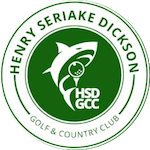Disqualification is the prescribed penalty for the following offences:
1. Not playing holes in the correct order (Rule 1-1 – stroke play only).
2. Deliberately influencing the position or the movement of a ball (Rule 1-2).
3. Deliberately deflecting or stopping a ball (Rule 1-2).
4. Agreement to waive any Rule or penalty (Rule 1-3).
5. Playing from the next tee without holing out on the previous green (Rule 3-2 – stroke play only).
6. Playing a second ball and not subsequently reporting the facts to the Committee (Rule 3-3).
7. Refusing to comply with a Rule affecting the rights of another competitor (Rule 3-4).
8. Making a stroke with a non-conforming club (Rule 4-1).
9. Deliberately changing the playing characteristics of a club during a stipulated round (Rule 4-2).
10. Applying ‘foreign material’ to the face of a club (Rule 4-2).
11. Playing with a club that has been rendered non-conforming by damage other than in the normal course of play (Rule 4-3b & c).
12. Failure to declare excess club (i.e. more than 14) out of play immediately upon discovery, or using an excess club after the declaration during the remainder of the stipulated round (Rule 4-4).
13. Using a non-conforming ball (Rule 5-1).
14. Applying ‘foreign material’ to a ball (Rule 5-2).
15. Declaring (match play) or recording (stroke play) a higher handicap than entitled to (Rule 6-2).
16. Failure to record handicap on scorecard (Rule 6-2 – stroke play only).
17. Failure to start at the appointed tee time (Rule 6-3).
18. Failing to ensure that no more than one caddie is used at any one time, after being penalised for a breach of this Rule, during the remainder of the stipulated round (6-4).
19. Failing to sign a score card (Rule 6-6).
20. Signing an incomplete or incorrect score card (Rule 6-6).
21. Unduly delaying play subsequent to receiving a penalty for the same offence from the Committee (Rule 6-7).
22. Discontinuing play without Committee approval (Rule 6-8).
23. Practising on the course on the day of play (Rule 7-1 – stroke play only)
24. Agreeing to play out of turn in order to gain an advantage (Rule 10.2c – stroke play only).
25. Using a non-conforming tee (Rule 11-1).
26. Deliberately moving the tee-markers because the player feels that they are too close together, too far back, aimed in the wrong direction or some similar reason and not replacing them before anyone makes their stroke (Decision 11-2/2b).
27. Playing from outside the teeing ground and not subsequently correcting the error (Rule 11-4).
28. Using an artificial device or unusual equipment (Rule 14-3).
29. Playing a wrong ball and not subsequently correcting the error (Rule 15-3 – stroke play only).
30. Playing from the wrong place and not subsequently correcting the error (Rule 20-7 – stroke play only).
31. Agreeing not to lift a ball that might assist any other player (Rule 22-1 – stroke play only).
32. Playing out of turn in foursomes (or threesomes) and not subsequently correcting the error (Rule 29-3).
33. Not identifying which partner’s gross score is to count in four-ball stroke play (Rule 31-3).
34. Committing a breach of etiquette that the Committee considers serious (Rule 33-7).
Good golfing,
What happens if I do not like the spot that I have placed my ball on and want to change it?
The player is only entitled to prefer the lie once, so the spot on which to place the ball must be chosen carefully!.. The ball is in play as soon as it is placed on the ground… If the player picks it up again and moves it, the player would incur a penalty of one stroke for moving his ball in play and the ball must be replaced (Rule 18-2a).



